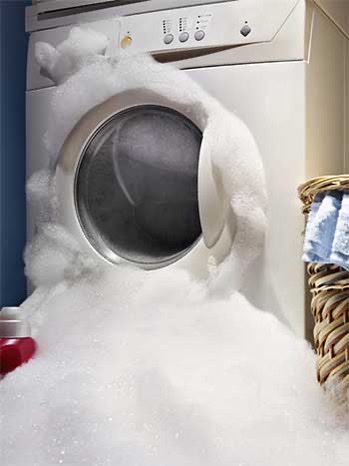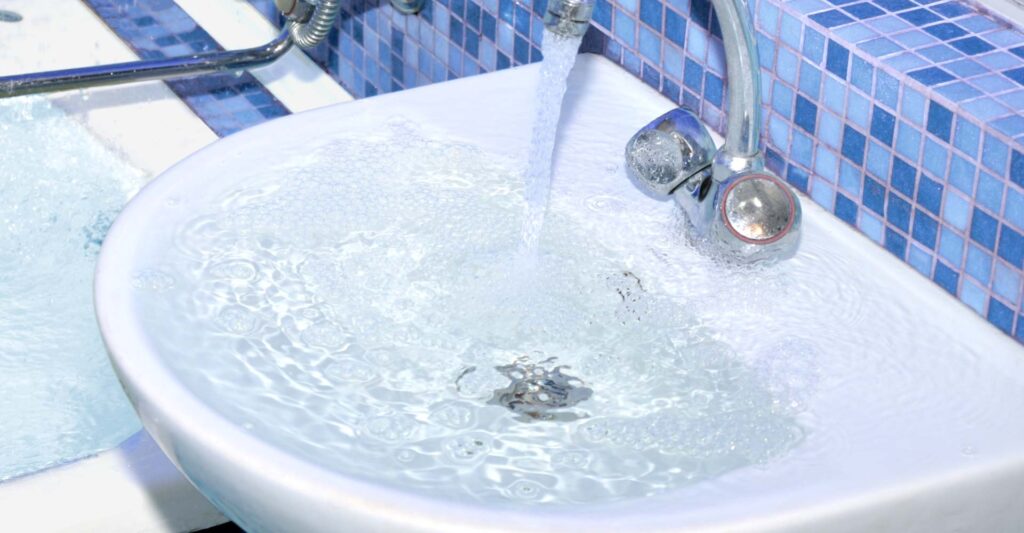How do I detect water damage in my home?

Water damage can be a serious problem in any home, and it’s important to detect it as early as possible to minimize the damage.
Here are 7 tips for detecting water damage in your home:
1. Check for Water Stains
- Do a visual inspection: Water stains on your ceilings, walls, or floors can be a sign of water damage. Look for brown or yellowish stains, which may indicate a leak from a plumbing fixture or roof. want to learn how to check for water stains? FIND OUT HOW
2. Smell for Musty Odors
- Perform an odor inspection: Musty or moldy smells can indicate the presence of water damage, particularly in damp areas like basements or crawl spaces. FIND OUT HOW
3. Look For Mold
- Mold can grow in areas where water damage has occurred. Look for black or green patches on walls, ceilings, or floors, particularly in areas that are frequently damp. FIND OUT HOW
4. Check Your Water Bill
- Abnormal increase in water use: A sudden increase in your water bill can be a sign of a hidden water leak in your home. FIND OUT HOW
5. Inspect Your Appliances
- Check your appliances, such as washing machines, dishwashers, and refrigerators, for signs of leaks or water damage. FIND OUT HOW
6. Monitor Your Water Meter
- Turn off all water sources in your home and check your water meter. If it continues to run, it could indicate a hidden water leak. FIND OUT HOW
7. Pay Attention to Your Gutters
- Clogged gutters can cause water damage to your roof and walls. Check your gutters regularly and clean them out as needed. FIND OUT HOW
Detecting water damage in your home as early as possible is key to minimizing the damage and preventing further issues. If you suspect water damage in your home, it’s important to address it promptly to prevent further damage and potentially hazardous mold growth. If the damage is significant, consider hiring a professional water damage restoration company to assess the situation and restore your home.

Recommended For You:
Can water damage restoration services prevent mold?
Genesis design collections have everything you need to design beautiful block-powered websites with just a few clicks. Go Pro to get our entire collection!
Read more about – How do I detect water damage in my home?
Ways to check for water stains in a home:
- Look for discoloration: Check the walls and ceilings for any discoloration or spots that appear darker than the surrounding area. This can be a sign of water damage.
- Check for bubbling or peeling paint: Water damage can cause the paint to bubble or peel. Look for any areas where the paint is no longer adhering to the wall or ceiling.
- Check for musty odors: Water damage can cause mold and mildew to grow, which can result in a musty odor. If you notice a strong musty smell, it’s likely that there is water damage present.
- Check for warped or buckled floors: Water damage can cause wood floors to warp or buckle. Check for any areas where the floor appears to be raised or uneven.
- Check for stains around windows and doors: Water can enter a home through gaps or cracks around windows and doors. Check for any stains or discoloration around these areas.
- Check the basement: Water stains may be more apparent in the basement, where water can seep in from the ground or through cracks in the foundation. Look for any signs of moisture or discoloration on the walls and floors.
If you notice any signs of water damage, it’s important to address the issue as soon as possible to prevent further damage to your home.
How to inspect for musty odors
If you are asking the question “How do I detect water damage in my home” and suspect that there may be musty odors in your home, follow these steps to check:
- Take a deep breath and try to identify any unusual or unpleasant odors.
- Move from room to room and try to pinpoint the source of the odor.
- Check areas where water damage is more likely to occur, such as basements, attics, and bathrooms.
- Use your sense of smell to determine the severity of the odor. Is it a faint odor or a strong, overpowering smell?
- Consider using a mold testing kit or hiring a professional to identify the source of the odor.
It’s important to note that musty odors can be a sign of mold growth, which can be harmful to your health. If you suspect that there may be mold in your home, it’s important to take action to address the issue as soon as possible. This may involve cleaning and disinfecting the affected areas, fixing any sources of water damage, and using proper ventilation to prevent future mold growth.
How to inspect for mold in your home, follow these steps:
- Look for visible signs of mold: Mold can often be seen on walls, ceilings, floors, and other surfaces. Look for black, brown, or green spots or discoloration that may indicate mold growth.
- Check for musty odors: As mentioned earlier, musty odors can be a sign of mold growth. Use your sense of smell to identify any unusual or unpleasant odors in your home.
- Conduct a visual inspection: Look for areas where moisture is present, such as bathrooms, kitchens, and basements. Check for any water damage or leaks in plumbing, windows, or roofs. Mold often grows in damp, humid environments.
- Use a mold testing kit: If you suspect mold growth but can’t find visible signs or identify the source of the odor, consider using a mold testing kit. These kits can be purchased at home improvement stores or online and typically involve taking a sample of the air or surface and sending it to a lab for analysis.
- Hire a professional: If you’re unsure about how to inspect for mold or suspect a larger issue, consider hiring a professional mold inspector. They can conduct a thorough inspection of your home and identify any mold growth or potential sources of moisture.
It’s important to address any mold growth as soon as possible to prevent further damage to your home and protect your health. If you find mold in your home, consider consulting with a professional mold remediation company to safely remove the mold and prevent future growth.
Identify a water damage by checking your water bill
Checking your water bill can help you identify water damage in your home in a couple of ways:
- Unexplained increase in water usage: If you notice a sudden increase in your water bill without any changes to your water usage habits, it could indicate a water leak or other plumbing issue in your home. This could be a sign of hidden water damage that you may not have noticed yet.
- Continuous high water usage: If you notice that your water bill remains consistently high over a period of time, it could indicate an ongoing water leak or other plumbing issue in your home. This could also be a sign of hidden water damage that needs to be addressed.
By monitoring your water bill, you can catch potential water damage issues early on and address them before they cause further damage to your home. If you notice an unexplained increase in your water bill or continuous high water usage, consider conducting a thorough inspection of your home or hiring a professional to help identify any sources of water damage.
How does inspecting your appliances prevent a water damage in your home?
Inspecting appliances can help prevent water damage in your home by identifying any potential leaks or malfunctions that could lead to water damage. Here are some examples:
- Washing machine: Inspect the hoses and connections for any signs of wear, cracking, or leaks. Replace any damaged hoses or connections immediately. Also, make sure the machine is level and that the drainage hose is properly secured to prevent leaks.
- Dishwasher: Check the hoses and connections for any signs of damage or leaks. Also, inspect the door gasket for any cracks or damage that could cause water to leak out during a wash cycle.
- Refrigerator: Check the water supply line for any signs of damage or leaks. Also, inspect the drip pan and drain tube for any clogs or blockages that could cause water to overflow and damage the surrounding area.
- Water heater: Check the tank and connections for any signs of corrosion, rust, or leaks. Also, inspect the pressure relief valve and drain valve for any leaks or signs of damage.
By inspecting these and other appliances regularly, you can catch any potential issues before they turn into major problems that could cause water damage to your home. It’s also a good idea to have a professional inspect and maintain your appliances on a regular basis to ensure they’re working properly and to prevent any potential water damage.
How inspecting a water meter will help you identify water damage
If you suspect that you have water damage in your home, you can inspect your water meter to help confirm the presence of a water leak. Here’s how:
- Locate your water meter: Your water meter is typically located near the street in a small underground box. It may also be located inside your home, such as in a basement or utility room.
- Turn off all water sources: To accurately inspect your water meter, turn off all water sources in your home, including faucets, showers, and appliances that use water.
- Check the meter reading: Once all water sources are turned off, check the meter reading. The meter should not be moving if there are no water sources in use. If the meter is still moving, it could indicate a water leak in your home.
- Monitor the meter for changes: After checking the meter reading, wait for a few hours and check the reading again. If the reading has changed, it could indicate a slow leak in your home.
- Conduct a dye test: To confirm the presence of a leak, you can conduct a dye test. Add a few drops of food coloring to the water tank of your toilet and wait for a few minutes. If the water in the toilet bowl changes color, it could indicate a leak in the toilet.
If you suspect a water leak in your home, it’s important to address it as soon as possible to prevent further water damage. Consider hiring a professional plumber to inspect and repair any leaks in your home’s plumbing system.
How to inspect gutters to prevent water damage
Regularly inspecting your gutters is an important part of preventing water damage to your home. Here’s how to inspect your gutters:
- Check for clogs: Clogged gutters can cause water to overflow and damage your home’s foundation and siding. Check for any debris, such as leaves or twigs, that may be blocking the gutters. Use a gutter scoop or small garden trowel to remove any debris.
- Inspect for damage: Check for any damage to the gutters, such as cracks, holes, or rust spots. Also, check for any loose or sagging gutters. Repair or replace any damaged or loose gutters immediately.
- Check for proper slope: The gutters should be sloped slightly downward towards the downspouts to allow for proper water flow. Use a level to check the slope and adjust if necessary.
- Inspect downspouts: Check the downspouts for any clogs or damage. Make sure the downspouts are directing water away from your home’s foundation and that the splash blocks are in place to prevent soil erosion.
- Check for leaks: After a rainstorm, inspect your gutters for any signs of leaks. Look for water stains or peeling paint on the exterior of your home, which could indicate water damage from leaking gutters.
By regularly inspecting your gutters and addressing any issues, you can prevent water damage to your home and ensure that your gutters are functioning properly. Consider hiring a professional to inspect and maintain your gutters on a regular basis to ensure they’re in good working order. This is just one of the ways you can lean how do I detect water damage in my home?
Technicians Responding Now!
Contact us today and get help you need and deserve.
We’re responding to all restoration emergencies now. Including Water Damage, Fire Damage, Smoke Damage, and more. Call Now.

Hi there, I’m Adam.
I’m a water damage restoration manager for Benchmark Restoration & Cleaning and working in Vancouver Washington. When I’m not restoring homes, I’m out exploring the National Parks with family.
Benchmark Restoration & Cleaning
11419 NE 126th St, Suite #116 Vancouver Washington 98662
Phone: 360-696-4140
Email: [email protected]

Water Damage Restoration Services by Benchmark
Technicians responding now:
24/7 Response
Reflect your fashionable style.
Water Extraction
Specializing in water removal
Flash Drying
Rapid Drying techniques and state of the art equipment
Restoration
Returning homes to pre-loss condition faster.

